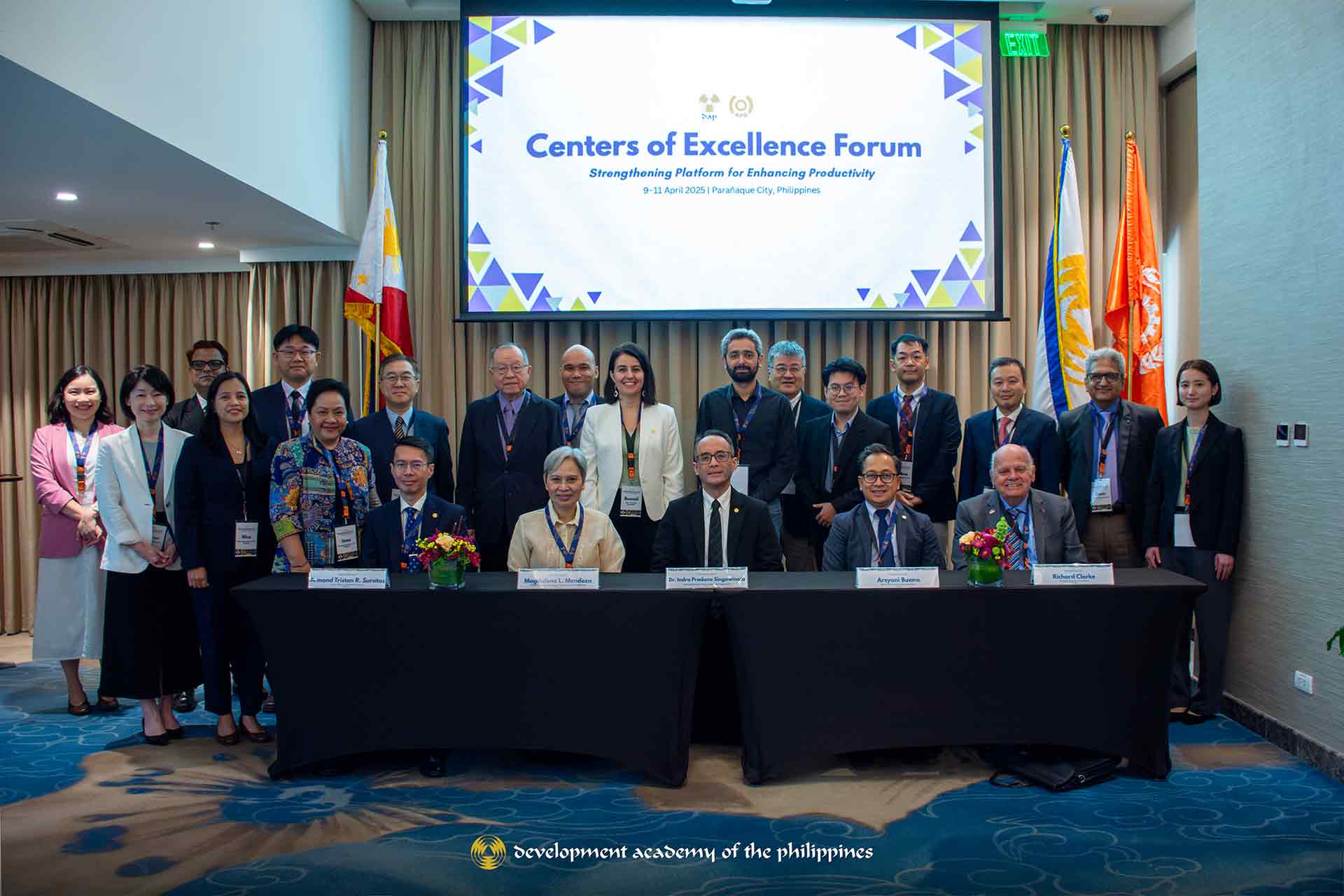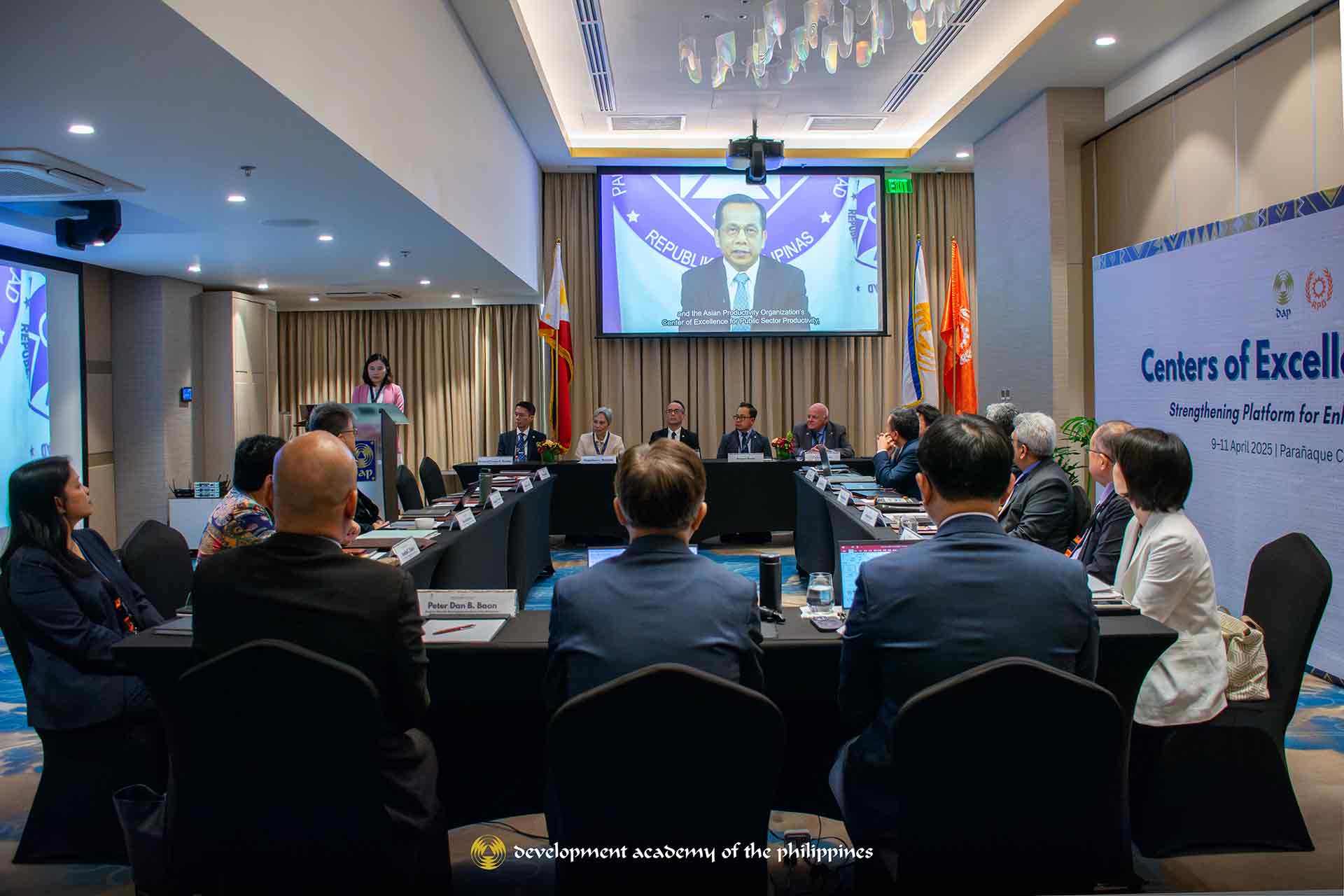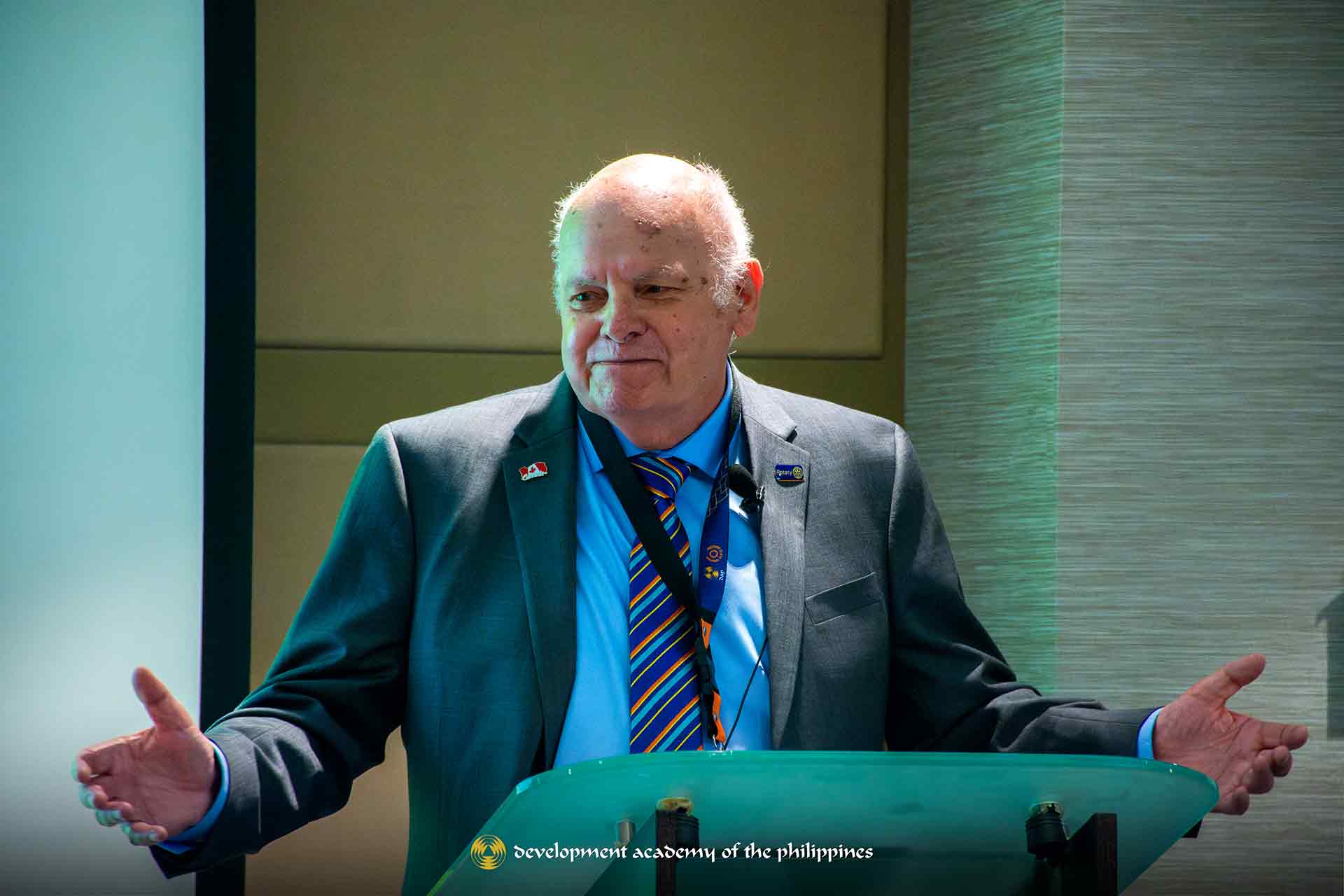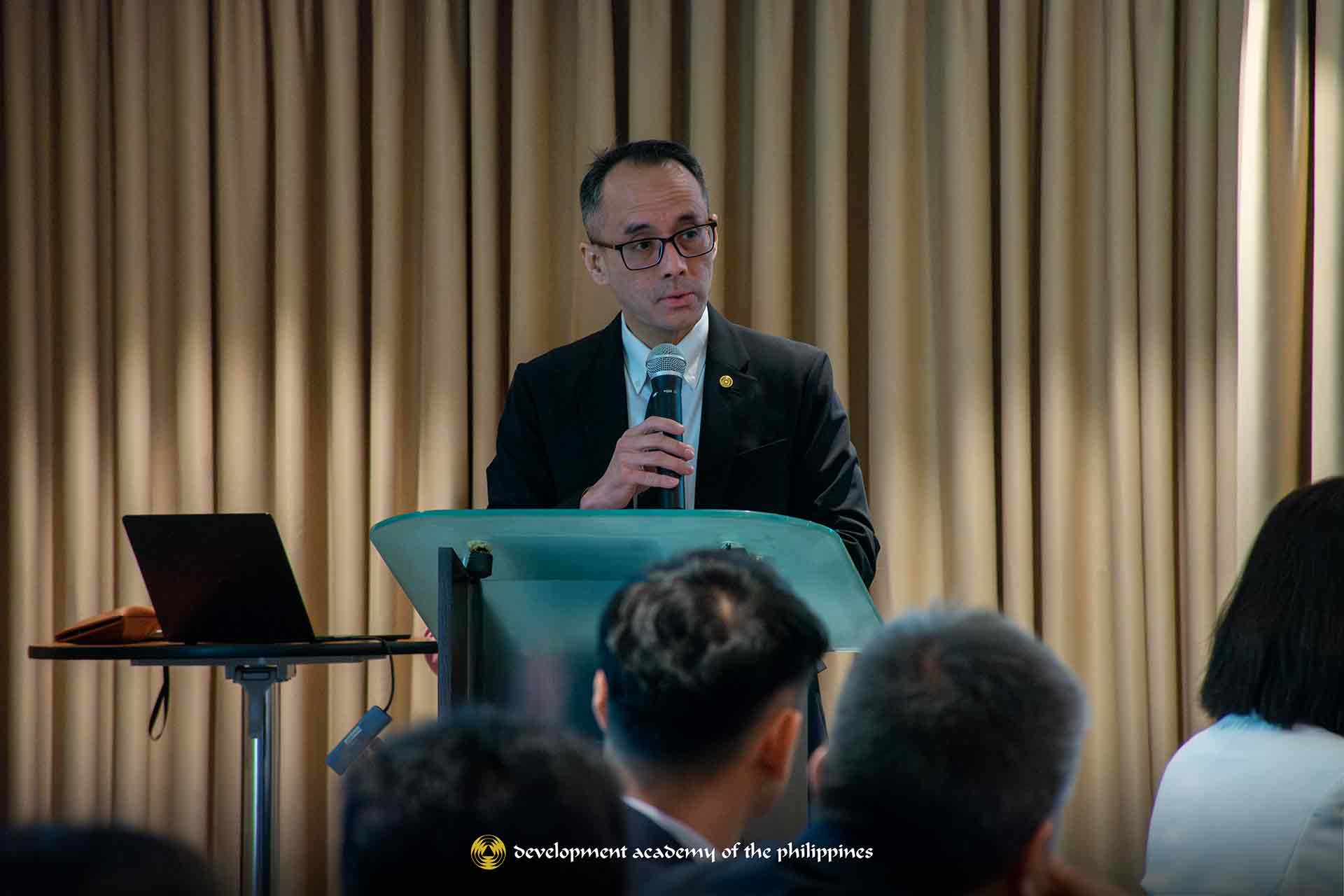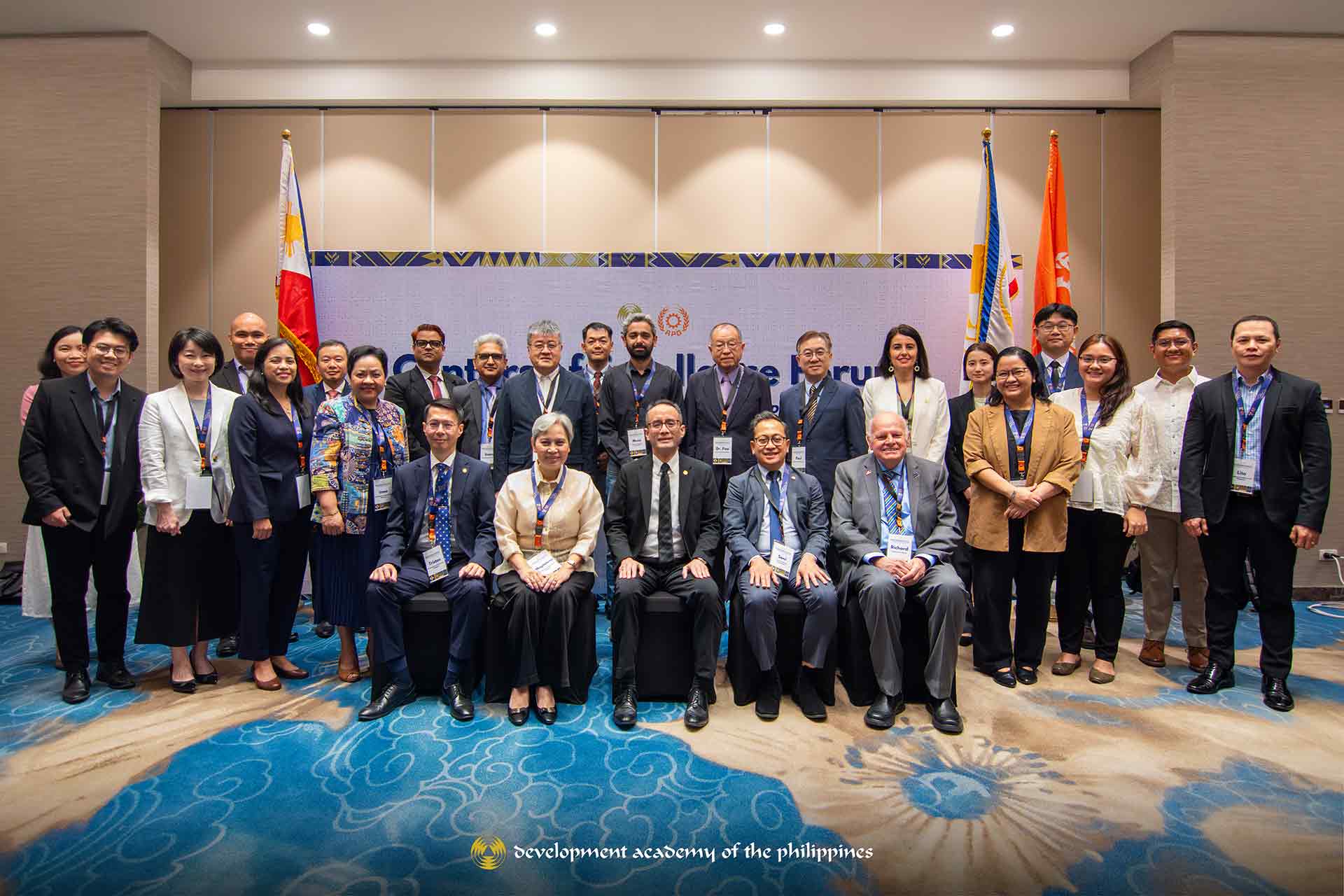On April 10, 2025, Asian Productivity Organization (APO) Secretary-General, Dr. Indra Pradana Singawinata, paid a courtesy visit to DAP Board of Trustees Chair and National Economic and Development Authority Secretary Arsenio M. Balisacan at the Development Academy of the Philippines (DAP) Building in Pasig City.
Dr. Singawinata was accompanied by DAP Officer-in-Charge Magdalena L. Mendoza, APO Liaison Officer for the Philippines Armand Tristan Suratos, and APO Head for In-Country Programs Division Arsyoni Buana. The visit highlighted the strengthening of APO-DAP collaboration in addressing current challenges and advancing productivity as a pathway to sustainable and inclusive socioeconomic development across Asia and the Pacific.
The courtesy visit also coincided with the DAP site visit and activities for the Centers of Excellence (COE) Forum: Strengthening Platforms for Enhancing Productivity, which runs from April 9 to 11, 2025. The COE Forum serves as a vital platform for exchanging best practices, addressing common challenges, and exploring opportunities for innovation and cooperation among Centers of Excellence.
Participants include COE heads and National Productivity Organization representatives from Taiwan, Japan, India, Pakistan, and Vietnam.
This article is originally posted on: https://dap.edu.ph/apo-secretary-general-pays-courtesy-visit-to-dap-bot-chairperson/






